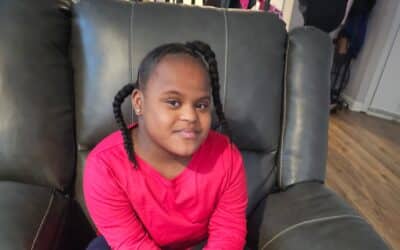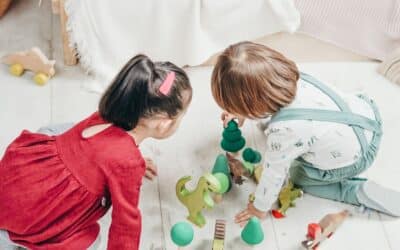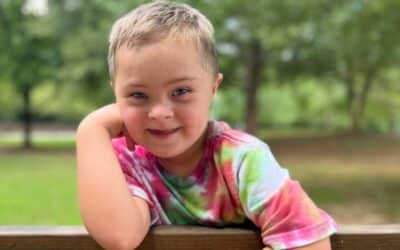The first year of a baby’s life is filled with remarkable growth and developmental milestones, with speech and language development being among the most crucial. Understanding this developmental phase can empower parents to support their child’s communication journey effectively. In this article, we will describe speech and language development during the first year of life.
Key Areas of Speech and Language Development
The areas of speech and language development that evolve during this period include:
1. Receptive Language
- Definition: This is the ability to understand and process language.
- Example: A baby turning their head when you say their name or following simple commands like “look” or “come here” demonstrates receptive language skills.
2. Expressive Language
- Definition: This involves the ability to express thoughts, feelings, and ideas through language.
- Example: When a baby babbles, uses gestures, or says, signs, or signals their first words like “mama” or “dada,” they are using expressive language.

3. Pragmatic Language
- Definition: This refers to the social use of language, including understanding and following social rules of communication.
- Example: A baby may show early pragmatic language skills by looking at your face when you talk and smiling in response to your smile.
4. Speech Sound Production
- Definition: This is the ability to articulate and produce speech sounds.
- Example: As the baby babbles and begins to form sounds that resemble speech (like “ba-ba” or “da-da”), they are developing speech sound production skills.
Understanding Developmental Milestones
Birth to 3 Months
- Coos and Gurgles: Early vocalizations and sounds of contentment.
- Reacts to Sound: Startled or intrigued reactions to different noises.
- Eye Contact: Beginning of pragmatic language/social communication.
Strategies for Parents
- Regular Conversation: Talk to your baby often, naming things and describing your actions and environment.
- Singing and Music: Sing soft lullabies and play pleasant melodies to stimulate their listening and sound awareness.
4 to 6 Months
- Babbles with Expression: Experimentation with varied sounds.
- Laughs and Giggles: Expressing joy through vocal sounds.
- Turns Towards Sounds: Noticing and responding to sound sources.
Strategies for Parents
- Name it: Point and use language to label and talk about important people, actions, and objects.
- Reading Time: Use picture books with realistic images, name and talk about the images.
- Sensory Exploration: Engage in play that stimulates the awareness of sounds, touch, visual stimuli, smells, and tastes through exploration.

7 to 12 Months
- Babbling: Sounds like ‘ma-ma’ or ‘da-da’ emerge. Later, mixed babbles such as ‘muh-duh-guh’ are shown.
- Responds to Name: Recognizing and reacting to their name.
- Gestures: Using actions like reaching, pointing, clapping, or waving to communicate.
Strategies for Parents
- Playful Interaction: Play games like peek-a-boo to reinforce vocabulary, imitation, turn taking, and anticipation.
- Following Simple Commands: Encouraging understanding through modeling and practice of simple requests such as ‘give me______.”
Importance of Language Exposure and Focused Parent Attention
Exposure to Language
- Rich Language Environment: Exposing your child to a wide range of words and sentence structures associated with their experiences, helps in building their vocabulary and understanding of language.
- Variety of Speakers: Interactions with different people provide diverse language exposure, enhancing language learning.
Focused Parent Attention and Modeling
- Quality Interaction: Engaged and responsive interactions with your baby are crucial. This means not just talking with them, but also listening and responding to their attempts to communicate.
- Modeling Language: Demonstrate language as you interact with your child using a variety of words and sentences.
Practical Examples for Everyday Routines
- Use Descriptive Language: Name and describe your actions and the environment during routines, playtime, and other experiences.
- Encourage Exploration and Hands-On Learning: Offer your child opportunities to safely explore their world and add language to what they are doing, seeing, hearing, and experiencing.
- Storytelling: Share picture and storybooks and talk about everyday events, emphasizing important words and expressions.
FAQs
- What are signs of language development issues in babies?
- Delayed babbling, limited reactions to sounds and voices, or poor eye contact by 6 months are a few.
- What should I do if my child does not seem to be reaching their milestones?
- If you have concerns about your child’s development, discuss them with your pediatrician and contact your state’s Early Intervention program or a speech-language pathologist for advice and support.
- Are there activities to avoid?
- Limit screen time; prioritize interactive, face-to-face communication.
- Should I use baby talk?
- “Parentese,” or child-directed language is preferred. It is characterized by higher pitch, slower tempo, and exaggerated key words and intonation, is very beneficial. It uses real language and helps in tuning the baby into important vocabulary and language patterns.
- Can music help in language development?
- Yes, music and rhymes are great for rhythm, sound awareness, imitation, vocabulary development and so much more.
Additional Resources
- Speech and Language Developmental Milestones | NIDCD (nih.gov)
- Language and Speech Skills for Children Ages Birth to 1 year – Together by St. Jude™ (stjude.org)
- Language development: Speech milestones for babies – Mayo Clinic
- Let’s Talk About It: 5 Ways to Build Babies’ Language and Communication Skills from Birth | ZERO TO THREE
- Early Intervention (asha.org)
Summary/Conclusion
In the first year of life, a baby’s speech and language development is a crucial aspect of their overall growth. Understanding and nurturing developmental milestones, creating a rich language environment, and engaging in focused, quality interactions are the building blocks for speech, language, and communication development. Early intervention and proactive parental involvement are key to nurturing these skills. Remember, every child’s developmental path is unique and language experiences matter. Consult a speech-language pathologist if you have concerns about your child’s development. And enjoy the amazing journey of watching your child learn, grow, and communicate!




0 Comments